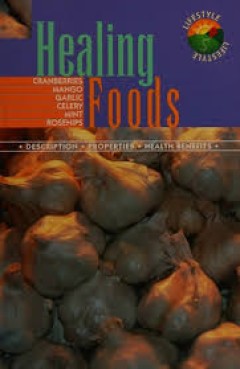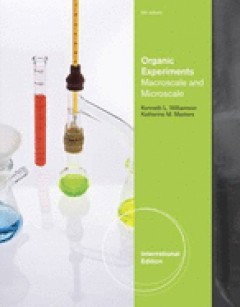Filter by

Organic experiments : macroscale and microscale
- Edition
- -
- ISBN/ISSN
- 9780538733632
- Collation
- -
- Series Title
- -
- Call Number
- BI076
- Edition
- -
- ISBN/ISSN
- 9780538733632
- Collation
- -
- Series Title
- -
- Call Number
- BI076

Healing foods
- Edition
- -
- ISBN/ISSN
- 9781842051573
- Collation
- 224 p. ; 20 cm.
- Series Title
- -
- Call Number
- 613.2 Wri h
- Edition
- -
- ISBN/ISSN
- 9781842051573
- Collation
- 224 p. ; 20 cm.
- Series Title
- -
- Call Number
- 613.2 Wri h

Screening of the Antibacterial Potential of Marine Actinobacteria from the Ba…
Marine Actinobacteria are a veritable cornucopia of marine natural products with strong potential in medicine and biotechnology, which generally serves as an invaluable resource for novel antimicrobial compounds. The ever-rising prevalence of multidrug-resistant bacteria has heightened the necessity for new antibiotics to challenge this threat. The marine environment has been widely known to yi…
- Edition
- -
- ISBN/ISSN
- -
- Collation
- -
- Series Title
- -
- Call Number
- BT 19-010

The Effect of Paper Mill Sludge Concentration and Composition in Modified Cas…
There is widespread recognition of the environmental damage caused by plastics, but its alternative, bioplastics, has lesser tensile and water sorption properties than conventional plastic. This experiment aims to determine the effect of paper mill sludge when mixed into modified cassava starch-based bioplastic when whole and when removed of CaCO3. The bioplastics were made with one control gro…
- Edition
- -
- ISBN/ISSN
- -
- Collation
- -
- Series Title
- -
- Call Number
- BT 19-015

The Effect of Initial Sugar Concentration on Bacterial Cellulose Production …
Bacteria cellulose is a type of cellulose produced by bacteria which offers a lot of advantages compared to plant cellulose due to its physicochemical properties. Because of its properties, it has a lot of potential of being used in tissue engineering, paper manufacturing, and food industry. Despite of its enormous potential, the high production cost hinders the implementation in the industrial…
- Edition
- -
- ISBN/ISSN
- -
- Collation
- -
- Series Title
- -
- Call Number
- BT 19-014

The Effect of Caffeine Concentration on Bacterial Cellulose Production using …
The most dominant biopolymer in the earth is cellulose, which mostly found in plants. On the other hand, bacteria have the ability to produced microbial cellulose called bacterial cellulose (BC). The BC does not contain any hemicellulose or lignin, which have higher purity compared to the plant cellulose. The production of BC has been studied, which shows that caffeine plays a role in the BC pr…
- Edition
- -
- ISBN/ISSN
- -
- Collation
- -
- Series Title
- -
- Call Number
- BT 19-013

Organic experiments : macroscale and microscale
The market leader for the full-year organic laboratory, this manual derives many experiments and procedures from the classic Feiser lab text, giving it an unsurpassed reputation for solid, authoritative content. The Sixth Edition includes new experiments that stress greener chemistry, as well as updated NMR spectra and a Premium Website that includes glassware-specific videos with pre-lab, grad…
- Edition
- 6th
- ISBN/ISSN
- 9780538733632
- Collation
- xiii, 802 p. : ill. : ind. ; 28 cm.
- Series Title
- -
- Call Number
- 547 Wil o
 Computer Science, Information & General Works
Computer Science, Information & General Works  Philosophy & Psychology
Philosophy & Psychology  Religion
Religion  Social Sciences
Social Sciences  Language
Language  Pure Science
Pure Science  Applied Sciences
Applied Sciences  Art & Recreation
Art & Recreation  Literature
Literature  History & Geography
History & Geography